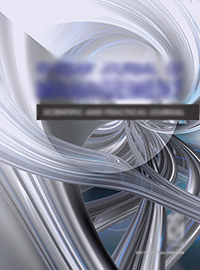This study included 60 patients aged 45 to 65 years (average age 56,8±1,11 years) with ischemic cardiomyopathy, the average duration of disease was 5.6±0.9 years. All patients had a history of instructions 1-3 documented myocardial infarction. With the help of questionnaire of scores of subjective characteristics of sleep (modification of Shpigel questionnaire) the authors found what a marked reduction in the efficiency and quality of night sleep as the progression of the disease is observed in patients with ischemic cardiomyopathy. Somnological portrait of a patient ischemic cardiomyopathy is characterized by pre-somnic disorders (difficulty falling asleep) when just noticeable manifestations of chronic heart failure and intra-somnic disorders (superfi-cial sleep and frequent awakening) in the later stages of CHF, dizziness after waking up (postsomnic disorder). Among the causes of sleep disorders in patients with ischemic cardiomyopathy is necessary to highlight the pa-thological symptom complex: orthopnea (detected in 76% of patients); shortness of breath, aggravated by lying (91%); nocturnal apnoea (56%); pain or discomfort in the heart region (48%); arrhythmias (42%), anxiety, pain-ful sensations and fear of death (67%). These symptoms as the manifestations of the disease cause a vicious cycle, worsening the medical condition of the patient and increase the risk of cardiovascular complications.
ischemic cardiomyopathy, chronic heart failure, sleep disorders.
1. Agal´tsov M.V. Obzor rezul´tatov mezhdunarodnykh klinicheskikh issledovaniy primeneniya preparata prolongirovannogo melatonina (Tsirkadin) pri narusheniyakh sna. Effektivnaya farmakote-rapiya. 2013. T. 12, № 6. S. 38-44.
2. Akarachkova E.S., Vershinina S.V., Kotova O.V., Ryabokon´ I.V. Terapiya insomnii. Nevrolo-giya i revmatologiya: Prilozhenie k zhurnalu Consilium Medicum. 2013. № 1. S. 29-33.
3. Artyukhova M.G. Narusheniya sna u kardiologicheskikh bol´nykh. Rus.med. zhurn. 2010. T.18, №8. S. 460-463.
4. Volov N.A., Shaydyuk O.Yu., Taratukhin E.O. Sindrom nochnogo apnoe i faktory riska serdechno-sosudistoy patologii. Rossiyskiy kardiologicheskiy zhurnal. 2008. № 3. S. 65-71.
5. Insomniya, sovremennye diagnosticheskie i lechebnye podkhody / Levin Ya.I., Kovrov G.V., Po-luektov M.G. [i dr.]. M.: Medpraktika-M, 2005. 116 s.
6. Poluektov M.G., Levin Ya.I. Rasstroystva sna i ikh lechenie. Zhurnal nevrologii i psikhiat-rii. 2010. № 9. S.70-75.
7. Poluektov M.G., Strygin K.N. Rasstroystva sna v pozhilom vozraste. Meditsinskiy sovet. 2014. № 5. S.74-81.
8. Rapoport S.I. Khronomeditsina, tsirkadiannye ritmy. Komu eto nuzhno? . Klinicheskaya medi-tsina. 2012. № 8. S. 73-75.
9. Strygin K.N., Poluektov M.G., Levin Ya.I. Formy insomnii i vozmozhnosti ee medikamentoz-nogo lecheniya. Effektivnaya farmakoterapiya. 2012. № 3. S. 38-43.
10. Buysse D.J. Insomnia. JAMA. 2013. Vol. 309, №7. R. 706-716.
11. Determinants of adherence to delayed-release doxylamine and pyridoxine in patients with nausea and vomiting of pregnancy/ Costantine M.M., Matok I., Chiossi G. [et al.] . Ther. Drug Monit. 2012. Vol. 34, №5. P. 569-573.
12. Principies and Practice of Sleep medicine Hoevenaar-Blom M.P. et al. Sleep/ Kryger M.H., Poth T. [et al.] . SLEEP. 2011. Vol. 34, №11. R. 1487-1492.
13. Redline S., Foody J.A. Time to Join the Top 10 Potentially Modifiable Cardiovascular Risk Factors?. Circulation. 2011. Vol. 124. P. 2049-2051.
14. Ringdahl E.N., Pereira S.L., Delzell J.E. Diagnostika i lechenie pervichnoy insomnii. Mezhdu-narodnyy nevrologicheskiy zhurnal. 2008. № 3. S. 23-29.





